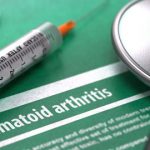NEW YORK (Reuters Health)—The interleukin 23 inhibitor guselkumab is associated with more improvement in psoriasis on the scalp, palms and/or soles compared with adalimumab, a new analysis suggests.
Andrew Blauvelt, MD, MBA, of Oregon Medical Research Center in Portland conducted a secondary analysis of data from the international VOYAGE 1 and VOYAGE 2 studies, double-blind, placebo- and adalimumab-controlled trials that demonstrated the efficacy of guselkumab for moderate to severe psoriasis.
Patients were randomized to receive 100 mg guselkumab at Weeks 0 and 4, then every eight weeks; placebo followed by 100 mg guselkumab starting at Week 16; or 80 mg adalimumab at Week 0, followed by 40 mg at week one, then every two weeks.
As reported online May 16 in JAMA Dermatology, of 1,829 patients (mean age, 43.6; 71.1% male; 81.9% white), 86.2% had psoriasis of the scalp; 27.4%, of the palms and/or soles; and 57.4%, of the fingernails.1
At baseline, 82.7% of patients had a score of 2 or higher on the scalp-specific Investigator’s Global Assessment score (ss-IGA); 25.2% on the Physician’s Global Assessment of the hands and/or feet (hf-PGA); and 50.7% on the fingernail assessment (f-PGA).
Guselkumab was superior to placebo, based on the proportion of patients achieving an ss-IGA score of 0 or 1 at Week 16 (81.8% vs. 12.4%), and to adalimumab at Week 24 (85.0% vs. 68.5%). An ss-IGA score of 0 was achieved by 69.9% in the guselkumab group vs. 56.3% in the adalimumab group.
An hf-PGA score of 0 or 1 was achieved by 75.5% of those in the guselkumab group vs. 14.2% in the placebo group at Week 16 and 80.4% in the guselkumab group vs. 60.3% in the adalimumab group at week 24. In addition, 75% of those in the guselkumab group vs. 50.3% in the adalimumab group achieved an hf-PGA score of 0.
Fingernail improvement did not differ appreciably among the treatment groups.
“These new data will inform therapeutic decisions by clinicians when faced with psoriasis patients with disease in difficult-to-treat areas of the body,” Dr. Blauvelt tells Reuters Health by email. “No significant side effects were observed in the guselkumab-treated patients.”
“Biologic therapies for psoriasis, including guselkumab, are expensive and access is restricted by insurance companies,” he adds.
Andrea Neimann, MD, of NYU Langone Health in New York City tells Reuters Health she is “impressed” by the findings.
“I’ve used both adalimumab and guselkumab in real-world settings to treat psoriasis at the same dosage mentioned in these clinical trials, since this reflects the dosages at which they are approved for moderate-to-severe psoriasis,” she says by email.
“I’ve used adalimumab for patients with both widespread moderate-to-severe psoriasis as well as for those with milder regional specific disease (scalp, palms/soles and nails),” she notes. “With guselkumab, on the other hand, I’ve not chosen to use it yet solely for these three areas, but rather to treat patients with widespread psoriasis, some of whom are affected in these specified areas.”
“There are some limitations to this study, though,” she adds. “Since this is a post-hoc study, it may not be generalizable to people affected only in these specific areas (i.e., with milder disease) as opposed to patients with widespread psoriasis that also happens to include these regional areas, which reflects the patients that were initially enrolled in Voyage 1 and 2.”
“Also, the cleanest data in this study is limited to 24 weeks,” she says, “so data on the nails, which take longer to get better, may not reflect the complete picture.”
The study was funded by Janssen, which manufactures guselkumab. Dr. Blauvelt and three coauthors have received fees from Janssen and five coauthors are employees of the company.
Reference
- Foley P, Gordon K, Griffiths CEM, et al. Efficacy of guselkumab compared with adalimumab and placebo for psoriasis in specific body regions: A secondary analysis of two randomized clinical trials. JAMA Dermatol. 2018 May 16. doi: 10.1001/jamadermatol.2018.0793. [Epub ahead of print]



